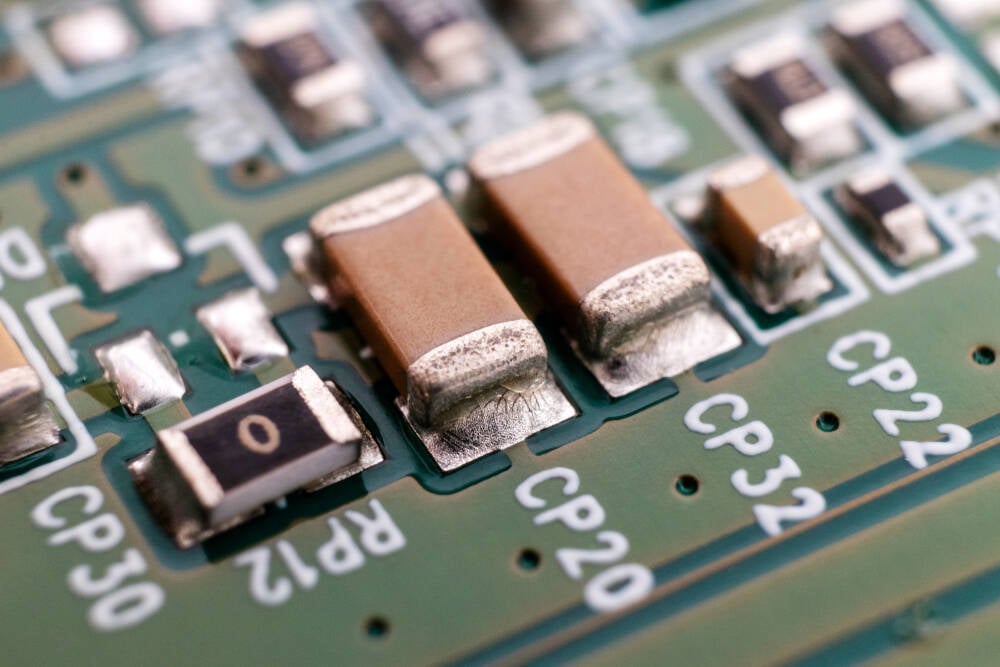A Good Kind Of Disorder: Boffins Boost Capacitor Tech By Disturbing Dipoles

A new approach to materials engineering promises to overcome the limitation of capacitors commonly used in smartphones, displays and electric vehicles, according to a study published in Nature.
Different approaches to storing energy in electric circuits have their trade-offs: lithium-ion batteries can store a lot of energy but deliver it slowly, while capacitors can deliver energy quickly but can't store a lot of it, roughly speaking.
To try to square this circle a team of materials science boffins at China's Hefei Institutes of Physical Science, Tsinghua Uni, and Shenyang National Laboratory for Materials Science, developed a composite material which achieved three times the energy density of comparable ceramic capacitors.
Multilayer ceramic capacitors (MLCCs) — used for many electronic applications, such as smartphones, displays and electric vehicles — consist of vertical stacks of capacitors connected in parallel. The world's largest maker of MLCCs is Murata Manufacturing, based in Japan, which supplies Apple, HP, and Intel.
The team made changes to a material group called antiferroelectrics – used in capacitors – in which layers of pairs of positive and negative charges are aligned in one direction alternate with layers in which such dipoles align in the opposite direction. The researchers prepared materials which deliberately disrupt this pattern by including areas of dielectrics – materials with high resistance used in capacitors – which do not exhibit this kind of dipole behavior.
"Overall, capacitors made using this composite material had a greater charge–discharge efficiency and breakdown strength than did devices made using unengineered lead zirconate [a material commonly used in capacitors]," said Piush Behera and Suraj Cheema of MIT in an accompanying article.
The result was an increase in the number of charge–discharge cycles that occur before breakdown. The maximum energy density was also enhanced compared to unengineered lead zirconate.
- BT unplugs plans to turn old cabinets into EV chargepoints
- Samsung shows off battery tech it says will see you gone in nine minutes
- You look like a fungi. Got mushroom in your life to build stuff with mycelium computers?
- China's top EV battery maker announced a breakthrough, but top boffin isn't convinced
While another alternative for high-performance capacitors exists involving thin-film layers, they are not suitable to such a wide range of applications as MLCCs.
Behera and Cheema suggest the combination of "MLCC-like structures that integrate thin-film layers" could result in high energy density, while these "MLCC-like devices" that incorporate the boffins' engineered material "could be promising."
With more development, the technique could also benefit on-chip capacitors, the authors suggest.
"As on-chip capacitor applications continue to advance, frustration-modulated high-performance antiferroelectrics materials can potentially be promising candidates for multilayer, large-scale and three-dimensional capacitors," the study said. ®
From Chip War To Cloud War: The Next Frontier In Global Tech Competition
The global chip war, characterized by intense competition among nations and corporations for supremacy in semiconductor ... Read more
The High Stakes Of Tech Regulation: Security Risks And Market Dynamics
The influence of tech giants in the global economy continues to grow, raising crucial questions about how to balance sec... Read more
The Tyranny Of Instagram Interiors: Why It's Time To Break Free From Algorithm-Driven Aesthetics
Instagram has become a dominant force in shaping interior design trends, offering a seemingly endless stream of inspirat... Read more
The Data Crunch In AI: Strategies For Sustainability
Exploring solutions to the imminent exhaustion of internet data for AI training.As the artificial intelligence (AI) indu... Read more
Google Abandons Four-Year Effort To Remove Cookies From Chrome Browser
After four years of dedicated effort, Google has decided to abandon its plan to remove third-party cookies from its Chro... Read more
LinkedIn Embraces AI And Gamification To Drive User Engagement And Revenue
In an effort to tackle slowing revenue growth and enhance user engagement, LinkedIn is turning to artificial intelligenc... Read more

